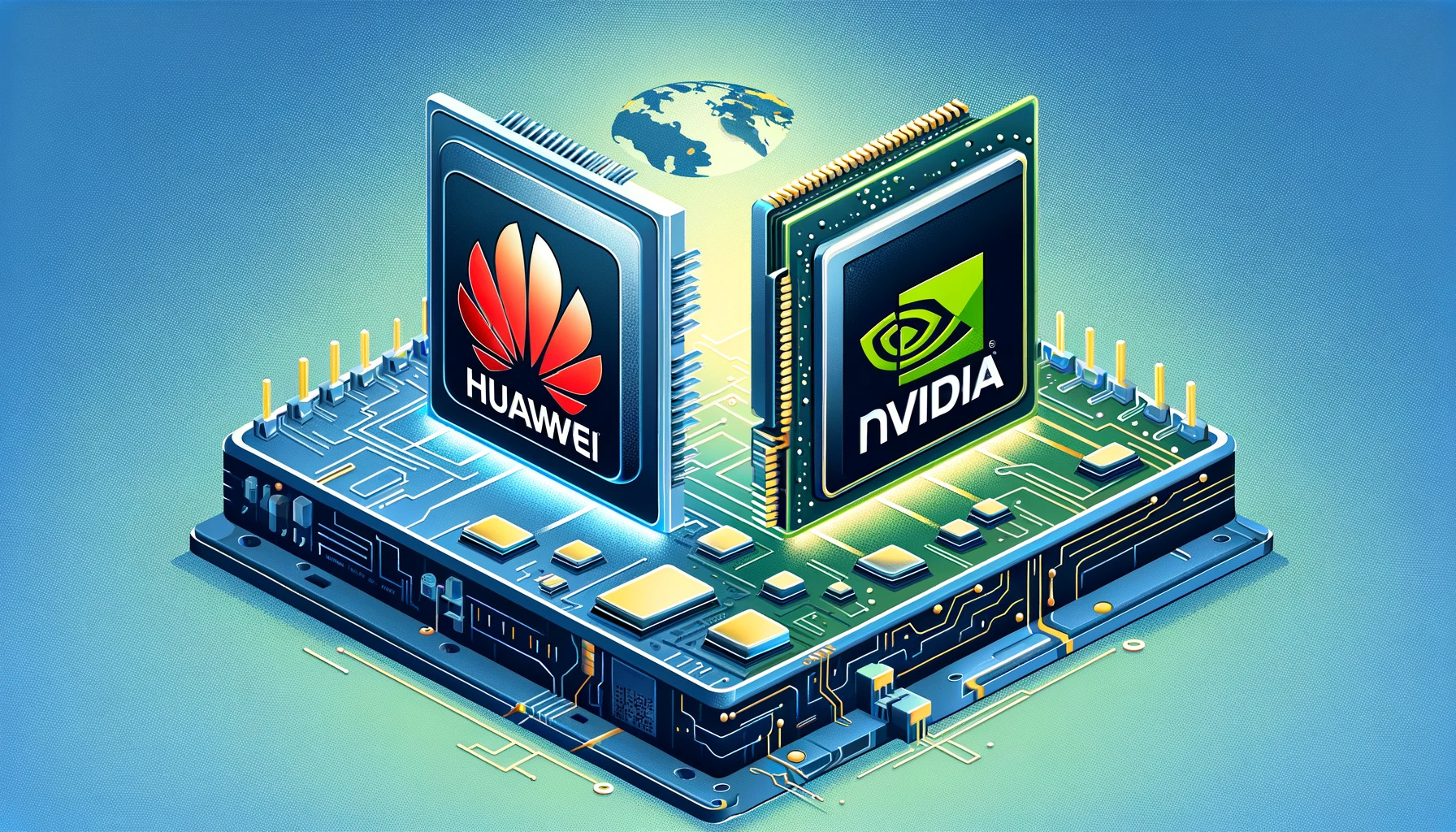
In the rapidly evolving landscape of the tech industry, Huawei Technologies has taken a bold step forward, marking its presence as a significant player in the artificial intelligence (AI) chip market. This development heralds a new era of competition, particularly with Nvidia, a titan in the field known for its advanced graphics processing units (GPUs). The catalyst for this shift was the imposition of US export restrictions, which limited Nvidia’s ability to ship its cutting-edge GPUs to China. Amidst these constraints, Huawei’s Ascend 910B chipset has emerged as a powerful alternative, capturing the attention of both industry insiders and analysts.
Huawei Ascend 910B: A New Epoch in Computing
At the heart of this technological tussle is the Ascend 910B chip, now a focal point of discussions in mainland China. It draws direct comparisons to Nvidia’s prestigious A100 data-centre GPUs. The Ascend 910B represents an evolution from its predecessor, the Ascend 910, which debuted shortly after Huawei found itself on a US trade blacklist. Crafted by Semiconductor Manufacturing International Corp (SMIC), China’s premier foundry, the chip utilizes an advanced 7-nanometre process technology.
Experts, including Dylan Patel from SemiAnalysis, posit that the Ascend 910B not only competes with but may also exceed the Nvidia A100 in terms of theoretical performance. This assertion marks a significant leap forward in AI chip technology and positions Huawei as a formidable challenger in the arena.
Huawei’s Strategic Maneuvering Amidst US Sanctions
Huawei’s journey has been anything but smooth, with US sanctions severely impacting its semiconductor development and smartphone business. Yet, the company has showcased remarkable resilience and innovation. A case in point is the launch of the Mate 60 Pro, Huawei’s pioneering 5G smartphone since the Mate 40 series. Unveiled in August of the previous year, the Mate 60 Pro, powered by the Kirin 9000s processor, sparked widespread speculation about Huawei’s strategy to navigate the comprehensive US chip ban. This development not only signaled Huawei’s resurgence in the domestic smartphone market but also underscored its burgeoning capabilities in semiconductor technology.
The Ascendancy of Huawei in the AI Chip Market
Huawei’s foray into the AI chip domain signifies a pivotal shift, posing a direct challenge to Nvidia’s dominance. Despite being reticent about the specifics of the Ascend 910B, Huawei’s commitment to AI technology was evident at the MWC Barcelona trade show. Unlike Nvidia, which leverages its vast GPU experience and the robust CUDA software ecosystem, Huawei is concentrating on its proprietary Compute Architecture for Neural Networks (CANN). This strategic initiative aims to synergize its hardware and software capabilities in AI computing, showcasing Huawei’s ambition to carve out a niche in this competitive landscape.
Ascend 910B vs. Nvidia A100 Comparison
| Feature | Huawei Ascend 910B | Nvidia A100 |
|---|---|---|
| Process Technology | 7-nanometre | 7-nanometre |
| Performance Benchmark | Competes with/surpasses A100 | Industry Standard for Data Centres |
| Manufacturing Partner | Semiconductor Manufacturing International Corp (SMIC) | Various, including TSMC |
| Software Ecosystem | CANN (Compute Architecture for Neural Networks) | CUDA |
| Market Availability | Mainland China | Global |
Challenges and Opportunities Ahead
Despite these advancements, Huawei faces significant hurdles, particularly due to the constraints imposed by US sanctions. These restrictions affect chip performance and production yields, necessitating further investments in software development to complement Huawei’s chip design prowess. Collaborations with other companies could provide a pathway to enhancing its software capabilities, a critical component for success in the competitive AI chip market.
The strategic moves of both Nvidia and Huawei are under intense scrutiny by industry experts. While Nvidia continues to benefit from its established CUDA platform, Huawei’s entry into the AI chip market heralds a new chapter of technological innovation and competition. This development is fraught with challenges but also brimming with opportunities.
Key Takeaways
- Huawei’s Ascend 910B emerges as a significant competitor to Nvidia’s A100 GPUs, highlighting a shift in the AI chip market dynamics.
- The Ascend 910B’s advanced technology, utilizing a 7-nanometre process by SMIC, indicates Huawei’s commitment to overcoming the challenges posed by US sanctions.
- Huawei’s strategic focus on AI is evident in its proprietary CANN software ecosystem, designed to integrate closely with its hardware offerings.
- Despite challenges, including US sanctions affecting chip performance and production, Huawei’s innovative strides in semiconductor technology signal its potential to become a leader in the AI chip industry.
- The competition between Nvidia and Huawei is set to intensify, with both companies vying for dominance in a rapidly evolving technological landscape.
This narrative of Huawei’s ascent in the AI chip market against the backdrop of geopolitical tensions and technological innovation paints a picture of a future where competition drives advancements in AI technology. As the industry continues to watch these developments unfold, the strategic maneuvers of both Huawei and Nvidia will undoubtedly shape the trajectory of AI computing for years to come.
Related News:
Featured Image courtesy of DALL-E by ChatGPT
